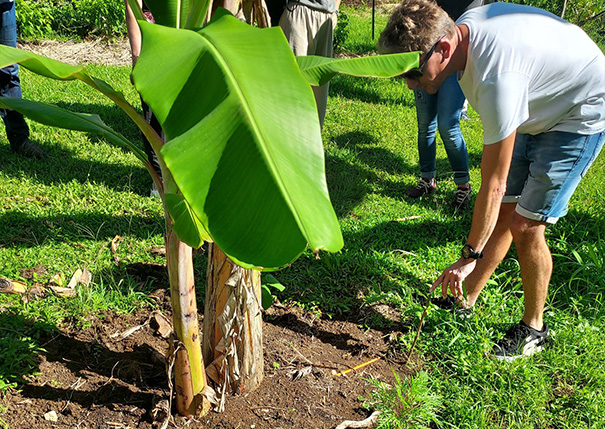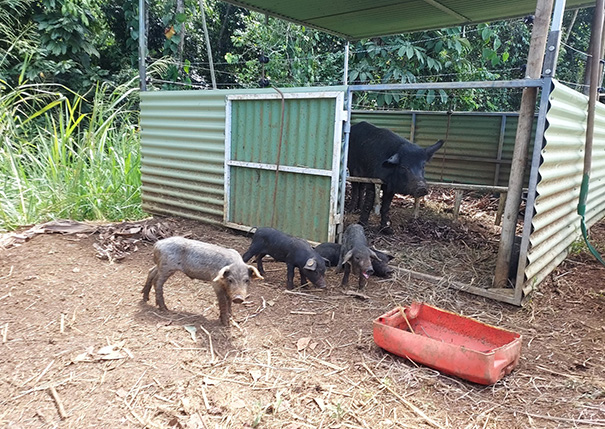The Creole garden, a win-win for the environment and achieving balanced diets from agricultural areas to Pointe à Pitre suburbs. INRAE Guadaloupe researchers Jean-Marc Blazy and Nathalie Minatchy explain ...

1 ha of agroecologically cultivated land can help feed up to eight people
The Guadeloupe Innovation Hub supports smallholder family farms to be able to adopt agroecological methods in tropical mixed systems. Many of these family farms are very small, i.e. less than 2 ha, and are therefore called microfarms. Incorporating diversity into these microfarms can increase their performance and strengthen their resilience to economic and climatic hazards. This is the principle behind the Creole garden, for which INRAE researchers have shown that one hectare requires the work of one person but provides the energy and protein needed to feed eight people.

Testing the attractive power of service plants to regulate pests
In the Creole garden, farmers rely on interactions between cultivated and associated plants to reduce inputs such as insecticides. On the Karusmart farm, a trial is currently testing the attractive power of service plants (canavalia, cosmos, tithonia) on parasitoid micro-hymenopterans, to regulate banana pests. In another trial, researchers are testing the power of flower strips to attract these parasitoid micro-hymenoptera. The question is to understand how far cucumber plants will be protected from defoliating caterpillars by parasitoid hymenoptera hosted in the flower strip.

Integrating livestock - Creole pigs
Integrating crop and livestock production is another key principle that can apply in the Creole garden. For Christophe, one of the farmer who was strongly involved in the co-design of Kréyol'Inov microfarm, his farm will indeed be “truly agroecological when he has really succeeded in integrating the animals". A Creole sow is already diversifying the farm's sources of income and adding value to the overripe bananas it eats. He plans to also graze sheep in banana inter-rows as an integrated strategy for weed management. Laying hens can help secure the farm's cash flow between crop harvest periods. INRAE researchers also aim to domesticate a local strain of chicken in order to further enhance crop-livestock interactions.

Mortenol Estate, Pointe à Pitre, Guadaloupe
Interestingly the Creole garden model is currently found at the back of houses, where fruit, vegetables, and even vanilla are grown. In suburban Mortenol housing estate in Pointe à Pitre, a highly diversified garden helps to recreate social links. Martine, the founder of this community garden told us that “in the garden, children are seeing ladybugs and bees again”. Martine also distributes fresh fruit and vegetables to certain families in the housing estate. This contributes to a balanced diet for low-income families. Some elderly people are grateful to her as she allows them to recover some rare fruit and vegetables they were used to eat when they were younger and were living in a less urbanized environment.
Find out more about KaruSmart (in French):
Projet Explorer: l'agriculture climato intelligente: https://www.facebook.com/guadeloupe.projet.explorer.97
Short films:
La KaruSmart: la micro-ferme climato intelligente guadeloupéenne: https://fb.watch/mszGxL9p8l/
Developing a climate-smart farm: https://youtu.be/rR2I-1YPGcQ




